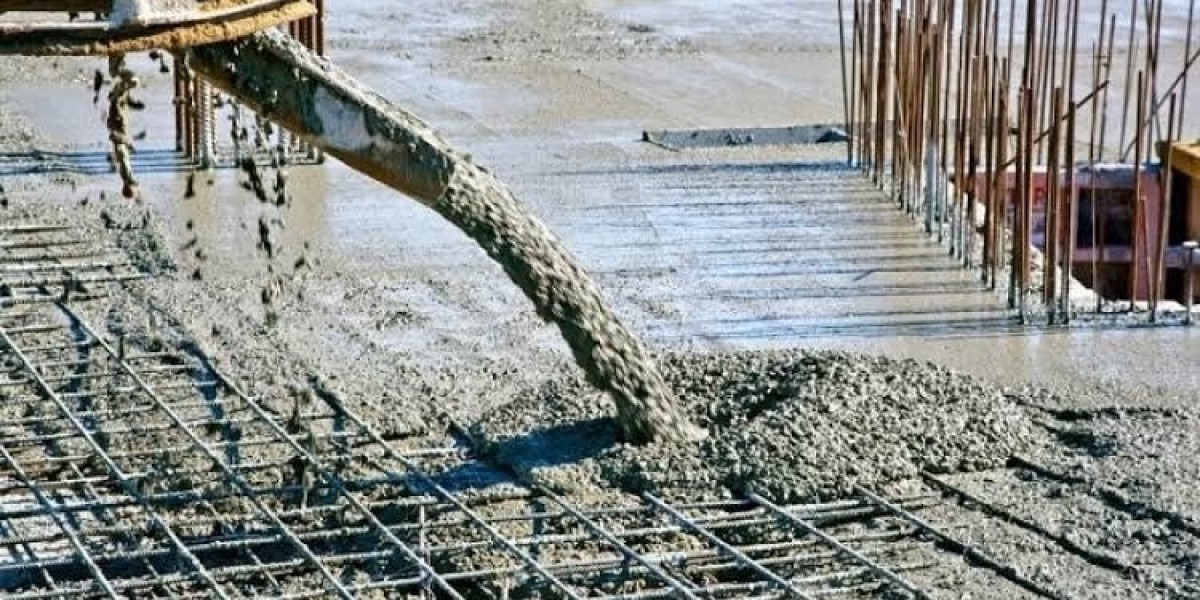IMARC Group’s “Reinforced Concrete Manufacturing Plant Project Report 2025: Industry Trends, Plant Setup, Machinery, Raw Materials, Investment Opportunities, Cost and Revenue” report provides a comprehensive guide on how to successfully set up a reinforced concrete manufacturing plant. The report offers clarifications on various aspects, such as unit operations, raw material requirements, utility supply, infrastructural needs, machinery models, labour necessities, transportation timelines, packaging costs, etc.
In addition to the operational aspects, the report also provides in-depth insights into reinforced concrete manufacturing plant cost, project economics, encompassing vital aspects such as capital investments, project funding, operating expenses, income and expenditure projections, fixed and variable costs, direct and indirect expenses, expected ROI, net present value (NPV), profit and loss account, and thorough financial analysis, among other crucial metrics. With this comprehensive roadmap, entrepreneurs and stakeholders can make informed decisions and venture into a successful reinforced concrete manufacturing unit.
Request for a Sample Report: https://www.imarcgroup.com/reinforced-concrete-manufacturing-plant-project-report/requestsample
What is Reinforced Concrete?
Reinforced concrete is a composite construction material made by combining concrete’s compressive strength with the tensile strength of steel reinforcement bars, wires, or mesh. While concrete alone is strong under compression, it is weak under tension; adding steel reinforcement compensates for this limitation, creating a more durable and flexible material. The reinforcement is embedded in such a way that the two materials act together to resist various loads, making reinforced concrete ideal for constructing buildings, bridges, dams, and other infrastructure. The bond between the steel and concrete ensures the distribution of stress and improves the overall structural integrity. Its ability to be molded into different shapes before setting, coupled with its strength and longevity, makes reinforced concrete one of the most widely used materials in civil engineering and architecture. It offers excellent resistance to fire and weather, which further adds to its popularity in both residential and commercial construction.
Market Trend and Drivers of Reinforced Concrete:
Several key factors are driving the global demand for reinforced concrete. Rapid urbanization and population growth, particularly in emerging economies, have led to increased construction of residential and commercial buildings, infrastructure projects, and transportation networks. Governments worldwide are investing heavily in public infrastructure such as highways, bridges, tunnels, and mass transit systems, all of which rely on reinforced concrete for durability and strength. Additionally, reinforced concrete’s versatility, cost-effectiveness, and resistance to natural disasters and fire make it a preferred choice among builders and engineers. Technological advancements in concrete mixing and reinforcement techniques are also enhancing performance, reducing environmental impact, and expanding application possibilities. Furthermore, the growing emphasis on sustainable and resilient construction practices is encouraging the use of reinforced concrete due to its long-life cycle and recyclability.
Key Aspects to Setup a Reinforced Concrete Plant:
- Location to Setup Plant
- Market Research
- Plant Layout
- Construction and Infrastructure
- Equipment/Machinery Procurement
- Documentation and Licenses
- Cost Analysis
Requirements to Setup a Facility:
- Funds
- Machinery
- Lands
Types of Costs to Setting up a Reinforced Concrete Factory:
- Land, Location and Site Development Cost
- Plant Layout Cost
- Machinery Requirements and Costs
- Raw Material Requirements and Costs
- Packaging Requirements and Costs
- Transportation Requirements and Costs
- Utility Requirements and Costs
- Human Resource Requirements and Costs
Project Economics:
- Capital Investments
- Operating Costs
- Expenditure Projections
- Revenue Projections
- Taxation and Depreciation
- Profit Projections
- Financial Analysis
Key Questions Answered in the Report:
- How has the reinforced concrete market performed so far and how will it perform in the coming years?
- What is the market segmentation of the global reinforced concrete market?
- What is the regional breakup of the global reinforced concrete market?
- What are the price trends of various feedstocks in the reinforced concrete industry?
- What is the structure of the reinforced concrete industry and who are the key players?
- What are the various unit operations involved in a reinforced concrete manufacturing plant?
- What is the total size of land required for setting up a reinforced concrete manufacturing plant?
- What is the layout of a reinforced concrete manufacturing plant?
- What are the machinery requirements for setting up a reinforced concrete manufacturing plant?
- What are the raw material requirements for setting up a reinforced concrete manufacturing plant?
- What are the packaging requirements for setting up a reinforced concrete manufacturing plant?
- What are the transportation requirements for setting up a reinforced concrete manufacturing plant?
- What are the utility requirements for setting up a reinforced concrete manufacturing plant?
- What are the human resource requirements for setting up a reinforced concrete manufacturing plant?
- What are the infrastructure costs for setting up a reinforced concrete manufacturing plant?
- And more…
How IMARC Can Help?
IMARC Group is a global management consulting firm that helps the world’s most ambitious changemakers to create a lasting impact. The company provide a comprehensive suite of market entry and expansion services. IMARC offerings include thorough market assessment, feasibility studies, company incorporation assistance, factory setup support, regulatory approvals and licensing navigation, branding, marketing and sales strategies, competitive landscape and benchmarking analyses, pricing and cost research, and procurement research.
Services:
- Plant Setup
- Factoring Auditing
- Regulatory Approvals, and Licensing
- Company Incorporation
- Incubation Services
- Recruitment Services
- Marketing and Sales
Contact Us:
IMARC Group
134 N 4th St. Brooklyn, NY 11249, USA
Email: sales@imarcgroup.com
Tel No:(D) +91 120 433 0800
United States: +1-631-791-1145







